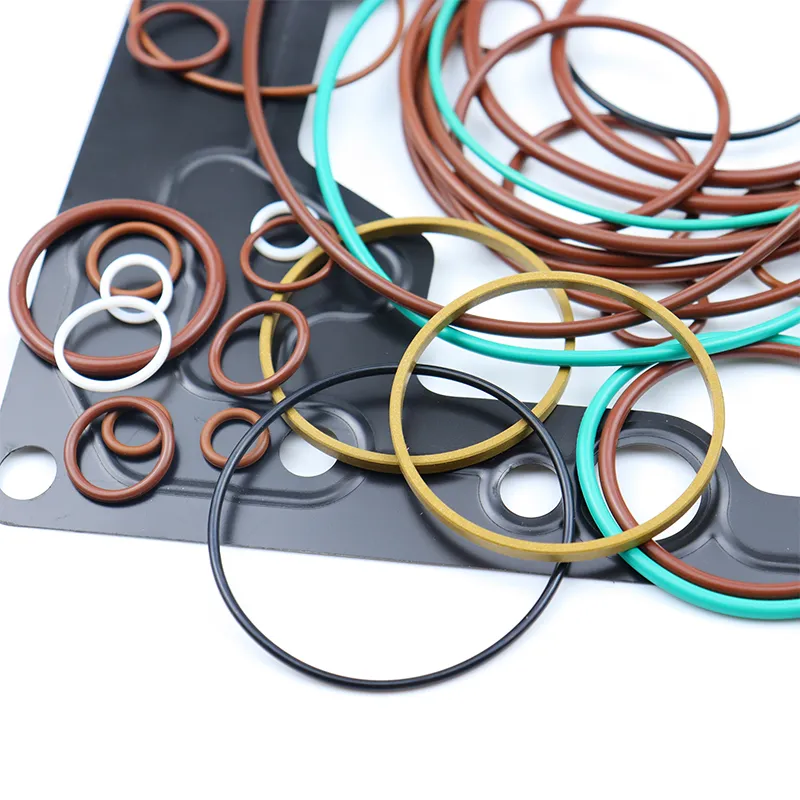Sep . 07, 2024 18:59 Back to list
High-Quality Rubber Hub Seals for Enhanced Performance
Understanding Rubber Hub Seals Essential Components for Optimal Performance
Rubber hub seals play a crucial role in various mechanical systems, particularly in automotive and industrial applications. These seals serve as barriers to prevent the leakage of fluids and contaminants from the hub area, protecting critical components and ensuring the smooth operation of machinery.
Composition and Structure
Rubber hub seals are typically made from high-quality elastomers that can withstand a wide range of temperatures, pressures, and environmental conditions. Common materials include nitrile, silicone, and fluorocarbon rubber, each chosen for its unique properties, such as oil resistance, flexibility, and durability. The structure of a rubber hub seal usually features a lip design that ensures a tight fit against the shaft or housing, effectively sealing against any potential leaks.
Applications
In automotive applications, rubber hub seals are often found in wheel bearings, drive shafts, and differential housings
. They are essential for keeping lubricating fluids contained within these components while preventing dirt, water, and other contaminants from entering and causing damage. In industrial settings, these seals are vital in heavy machinery and equipment, where they help maintain hydraulic systems and prevent the loss of essential lubricants.rubber hub seal

Importance of Proper Sealing
The integrity of rubber hub seals is critical for the longevity and reliability of machinery. A compromised seal can lead to fluid leaks, resulting in decreased performance, increased wear and tear on moving parts, and ultimately, costly repairs or replacements. Moreover, contamination from dirt and debris can cause significant damage to bearings and gears, leading to unexpected downtimes that can disrupt operations.
Maintenance and Replacement
Regular maintenance of rubber hub seals is essential for optimal performance. Inspections should be conducted to check for signs of wear, cracking, or deformation, which can indicate that a seal needs to be replaced. Depending on the operating conditions and the quality of the seals used, replacement intervals may vary. When replacing seals, it is crucial to ensure that the correct type and size are used to maintain the proper sealing function.
Conclusion
Rubber hub seals are indispensable components that ensure the efficient operation of mechanical systems in both automotive and industrial contexts. Understanding their function, applications, and maintenance requirements can help users enhance the reliability and durability of their equipment. By investing in high-quality rubber seals and adhering to regular inspection and maintenance schedules, industries can prevent fluid leaks and contamination, ultimately leading to improved performance and reduced operational costs. In an era where efficiency is paramount, rubber hub seals embody the small yet critical components that contribute to overall system reliability.
-
TCN Oil Seal Metal Ring Reinforcement for Heavy Machinery
NewsJul.25,2025
-
Rotary Lip Seal Spring-Loaded Design for High-Speed Applications
NewsJul.25,2025
-
Hydraulic Cylinder Seals Polyurethane Material for High-Impact Jobs
NewsJul.25,2025
-
High Pressure Oil Seal Polyurethane Coating Wear Resistance
NewsJul.25,2025
-
Dust Proof Seal Double Lip Design for Construction Equipment
NewsJul.25,2025
-
Hub Seal Polyurethane Wear Resistance in Agricultural Vehicles
NewsJul.25,2025
-
The Trans-formative Journey of Wheel Hub Oil Seals
NewsJun.06,2025
Products categories
















